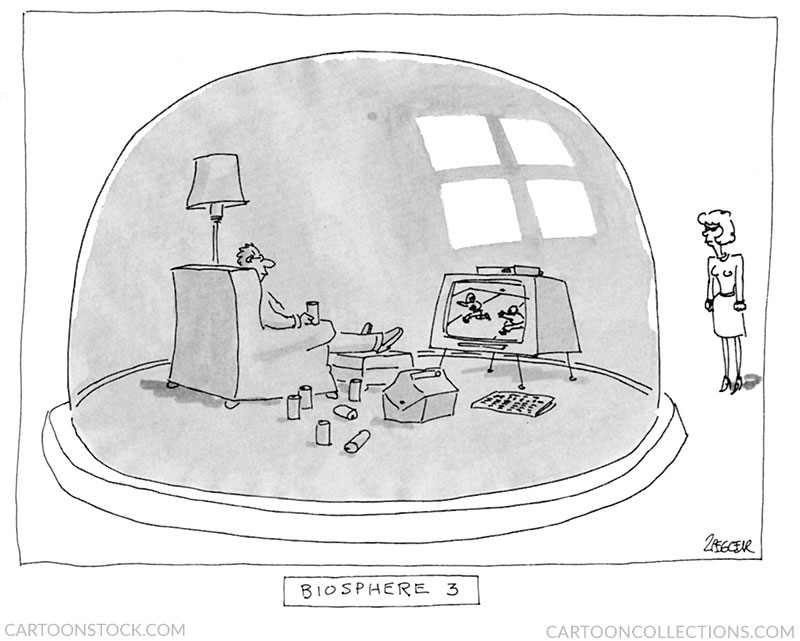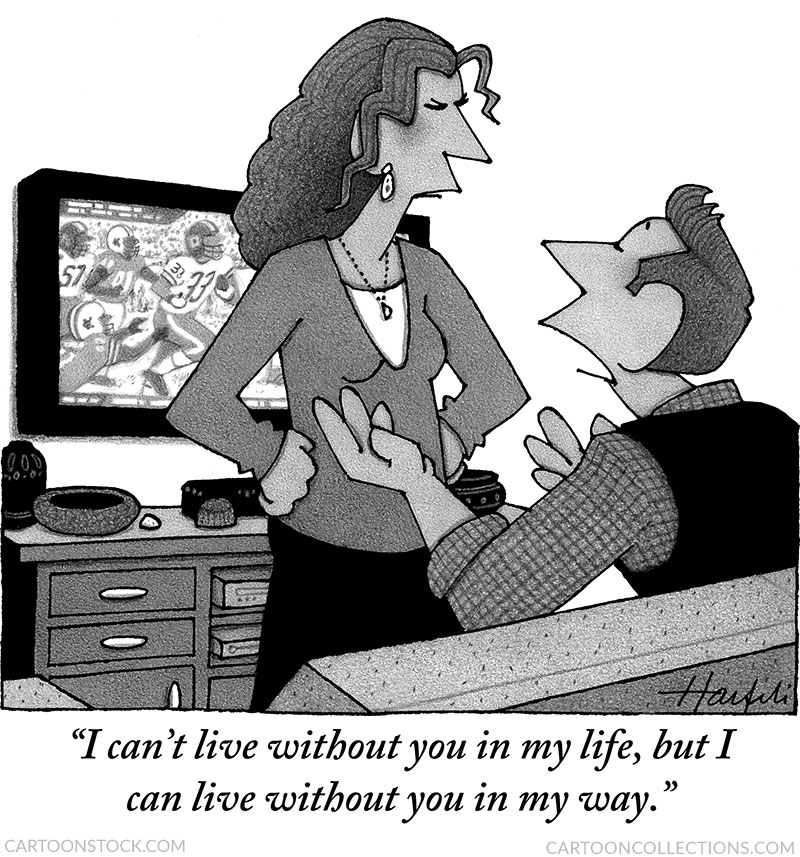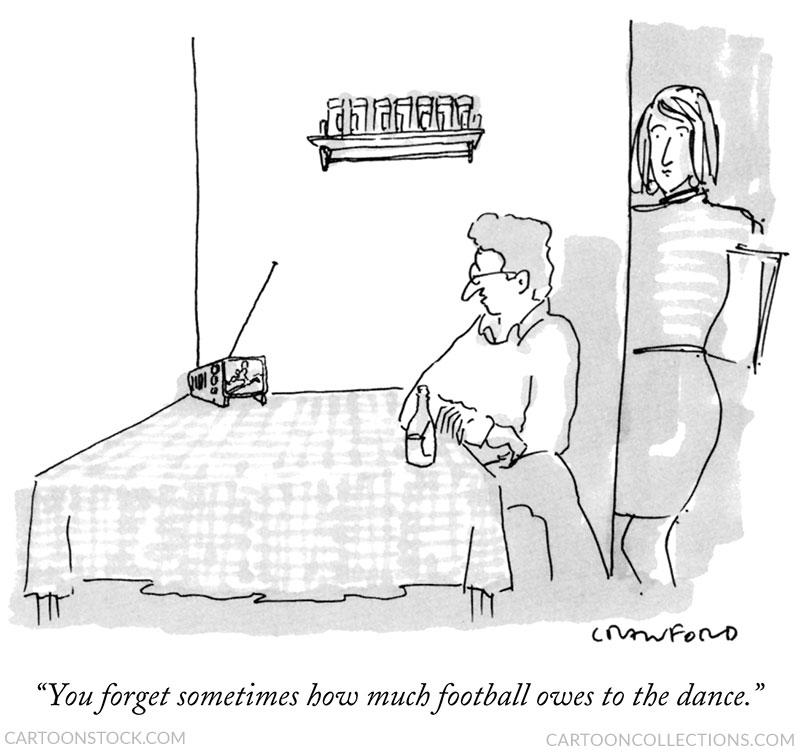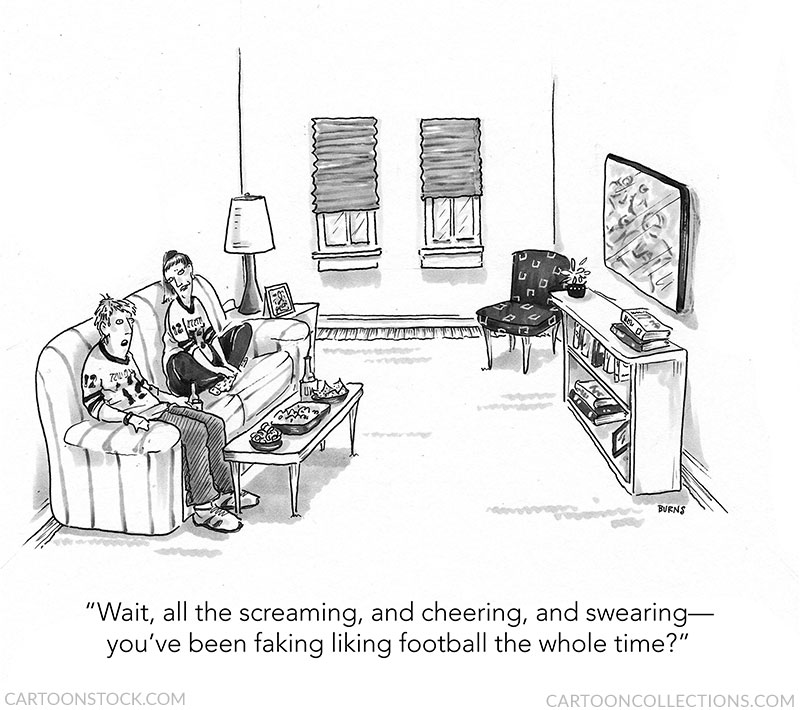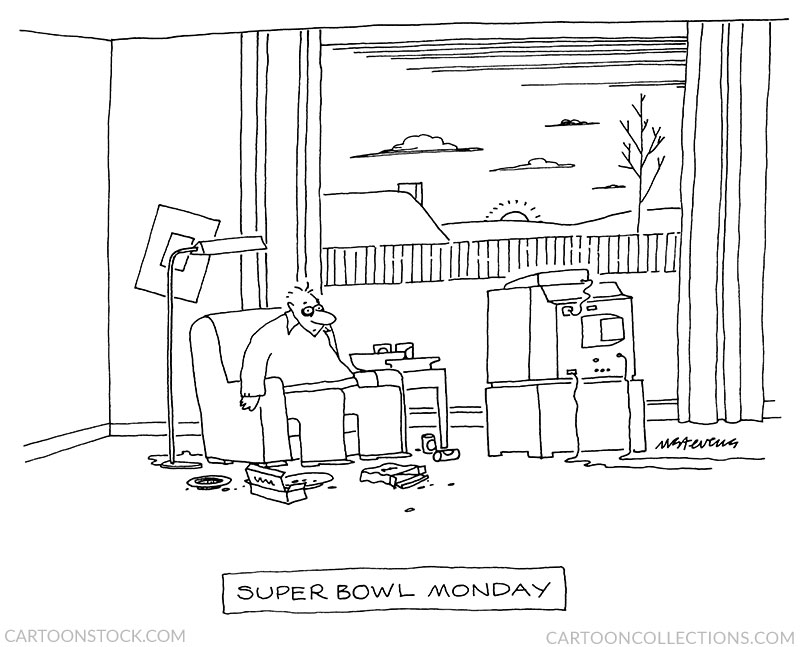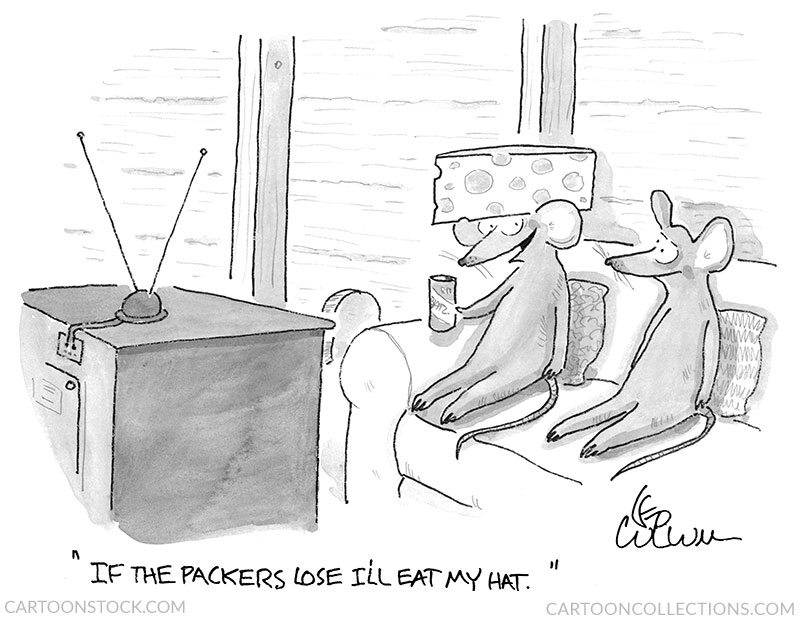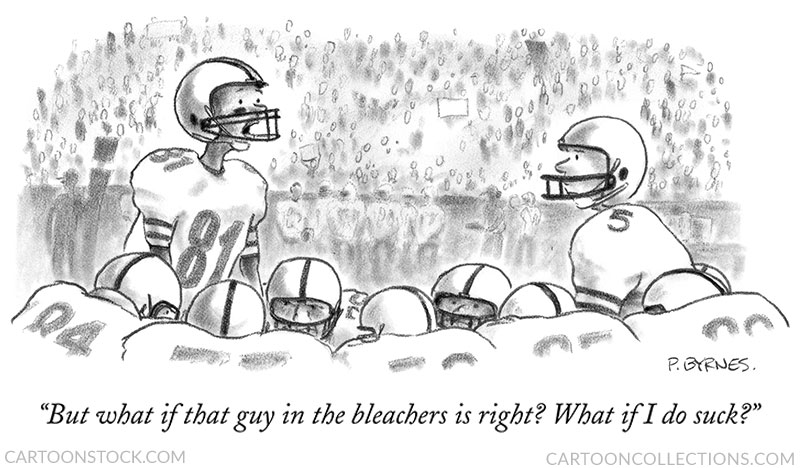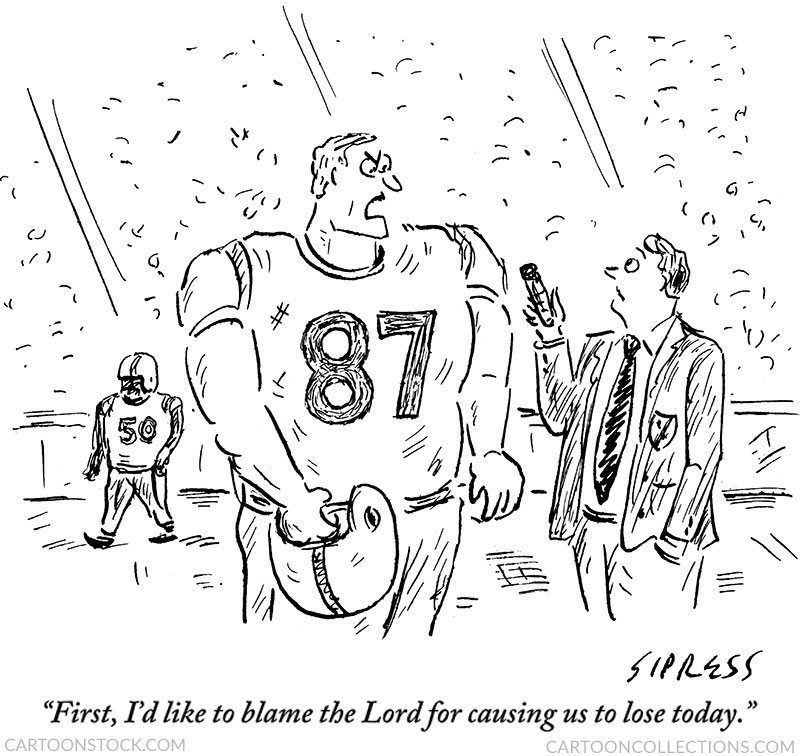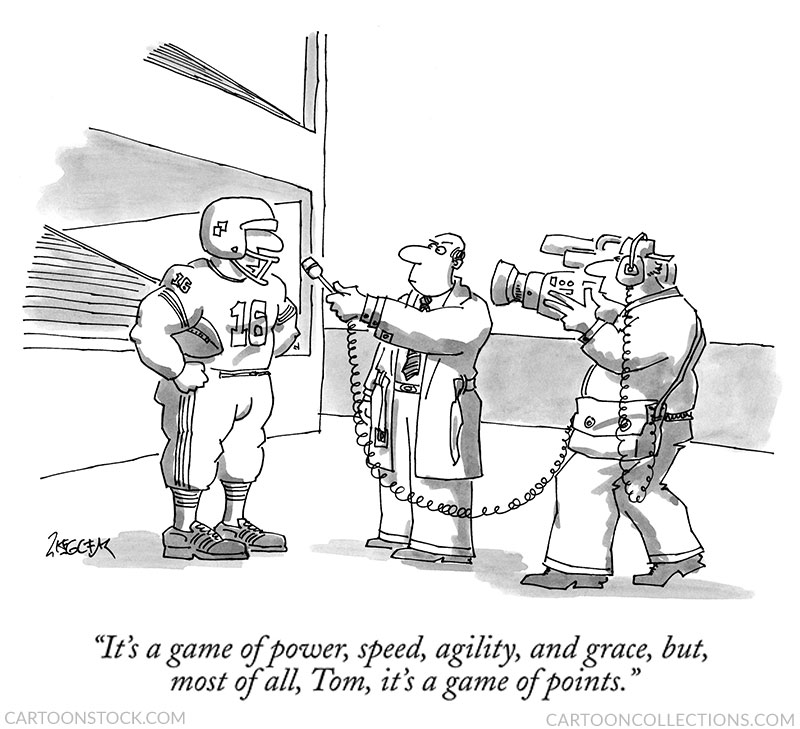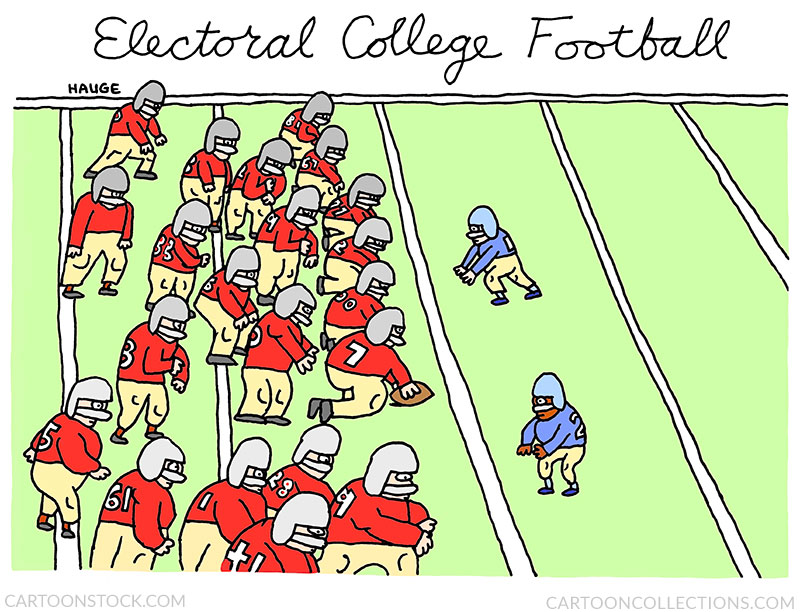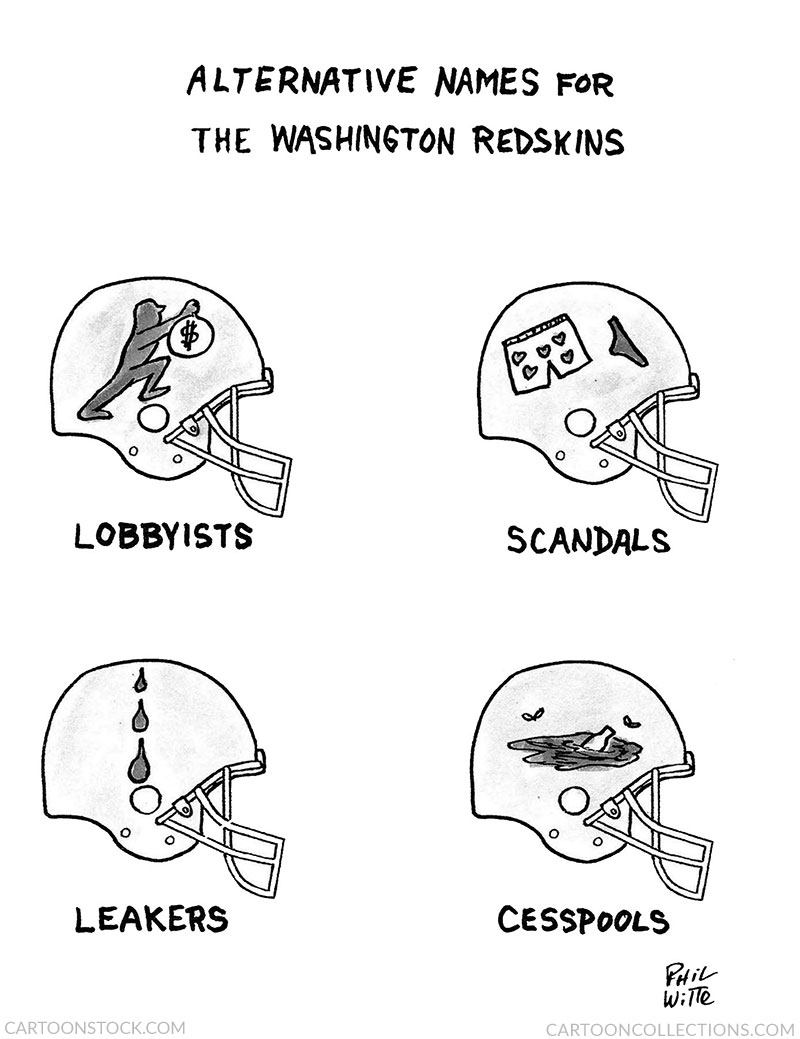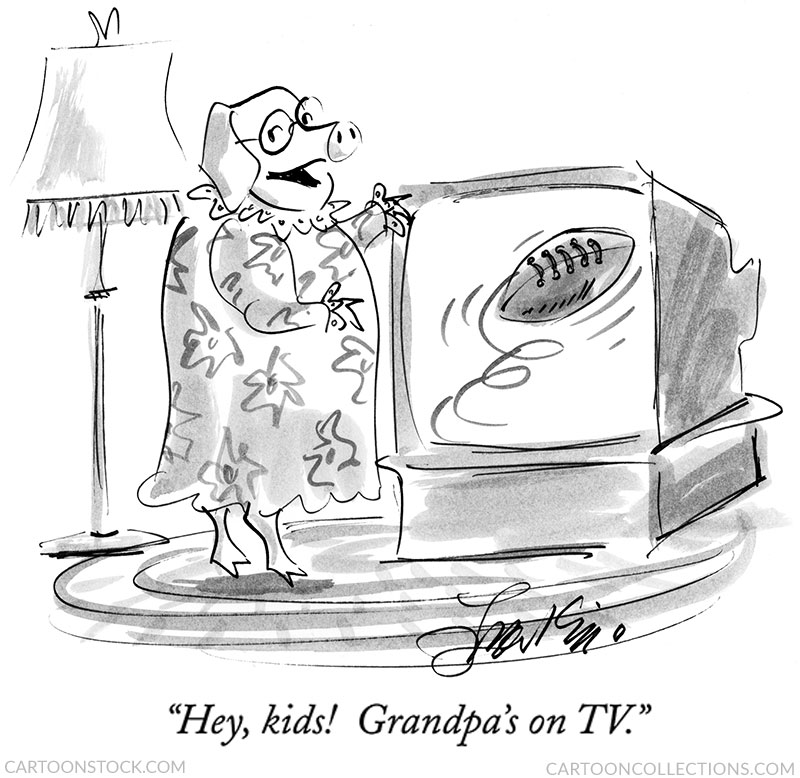 Cartoon critics Phil Witte and Rex Hesner look behind the gags to debate what makes a cartoon tick. This week our intrepid critics take a look at football.
Cartoon critics Phil Witte and Rex Hesner look behind the gags to debate what makes a cartoon tick. This week our intrepid critics take a look at football.
Football is America’s pastime if you don’t include baseball. To be clear, we mean American football, not that low-scoring affair called soccer. As a sport, football is more a cousin to rugby, with an extra Y chromosome.
As we slide into the playoff season, leading someday far off in the future to the Super Bowl, we take a look at how cartoonists take aim at this brutal and beautiful sport.
Cartoons often rely on stereotypes for immediate impact. Stereotypically, men love football and women hate it, or at least women hate that men spent countless hours in front of the T.V. instead of, say, nurturing their relationships. Of course, plenty of women do follow football, whether played professionally or at the college level. No matter. Jack Ziegler sees the football fan’s world as a self-contained male enclave. The wife’s hard stare is no match for the protective dome.
William Haefeli approaches this theme more realistically. The husband tempers his plea with a loving tribute, but his spouse is not mollified. As always, Haefeli’s textures give a three-dimensionality to his artwork. Note also how the televised image is depicted in subtle shades of gray and lacks the black outline of the foreground figures.
In this cartoon by Michael Crawford, the man muses upon the more aesthetic aspects of the carnage on the field, linking the sport to an art form that his wife appreciates. Indeed, Baryshnikov probably would have made a decent wide receiver capable of making leaping catches had he not been sidetracked by ballet.
Teresa Burns Parkhurst depicts a husband’s reaction after his wife makes a devastating confession. Until then, he was living in a fantasy football world.
Ultimately, the NFL season ends, and man is left a hollow shell, as depicted in this Mick Stevens cartoon. Mick told us that this is one of his early cartoons when he was much influenced by his friend Jack Ziegler, whose classic “hamburger madness” cartoon also featuring a deranged man oblivious to the dawning of a new day, comes to mind. Many nice details—the askew picture frame, empty snack boxes, overturned beer can—attest to the insanity that overtook this staid, upper-middle-class home.
Green Bay Packers fans are rabid supporters of their team, known to sit for hours in the snowy stands of Lambeau Field in sub-freezing weather. They are a special breed, recognized by their cheesehead hats, as seen in this playful cartoon by Leo Cullum.
Other cartoonists focus on the players. Here, for example, Pat Byrnes takes an empathic look at how a fan’s imprecations can affect a player’s psyche. This fellow seems to lack the mental toughness required to play the game. The artwork here is noteworthy in that it merely suggests the multitude of fans, as well as the players on the sideline.
The player interview has become a cliché, with players repeating the same dull responses to the same old questions. But here’s a player who rocks the boat with an answer that borders on blasphemy in this cartoon by David Sipress. As with many cartoons, the humor derives from defying our expectations.
Here’s another cartoon by Jack Ziegler that considers the same setup. The wording of the caption is perfect, progressing through a list of qualities that sports commentators often use rhapsodically, interrupted by the phrase “but, most of all, Tom,” leading up to the anticlimactic punchline.
Football can serve as a metaphor for other spheres of American life. Ron Hauge, a T.V. comedy writer and producer, as well as a cartoonist, depicts a blue team unfairly matched against an overflow crowd of players in red jerseys. This timely cartoon sums up the absurdity of the electoral college system nicely … and sometimes the underdog wins.
The notoriously conservative NFL finally figured out that “Redskins” is not the most culturally sensitive name for a football team, particularly a team representing the nation’s capital; moreover, indigenous people are not a common sight in D.C., let alone the halls of Congress. Phil Witte, the co-author of this blog, offers a few more appropriate alternatives.
We haven’t forgotten the one party without which football would not be possible in its present form. Edward Frascino offers a funny-sad cartoon about a grandpa who made the ultimate sacrifice for football. The flowing ink wash on the rug mimics the ol’ pigskin’s spiral flight. The look of delight on grandma’s face tells the viewer not to mourn her loss but to sit back and enjoy the game.


